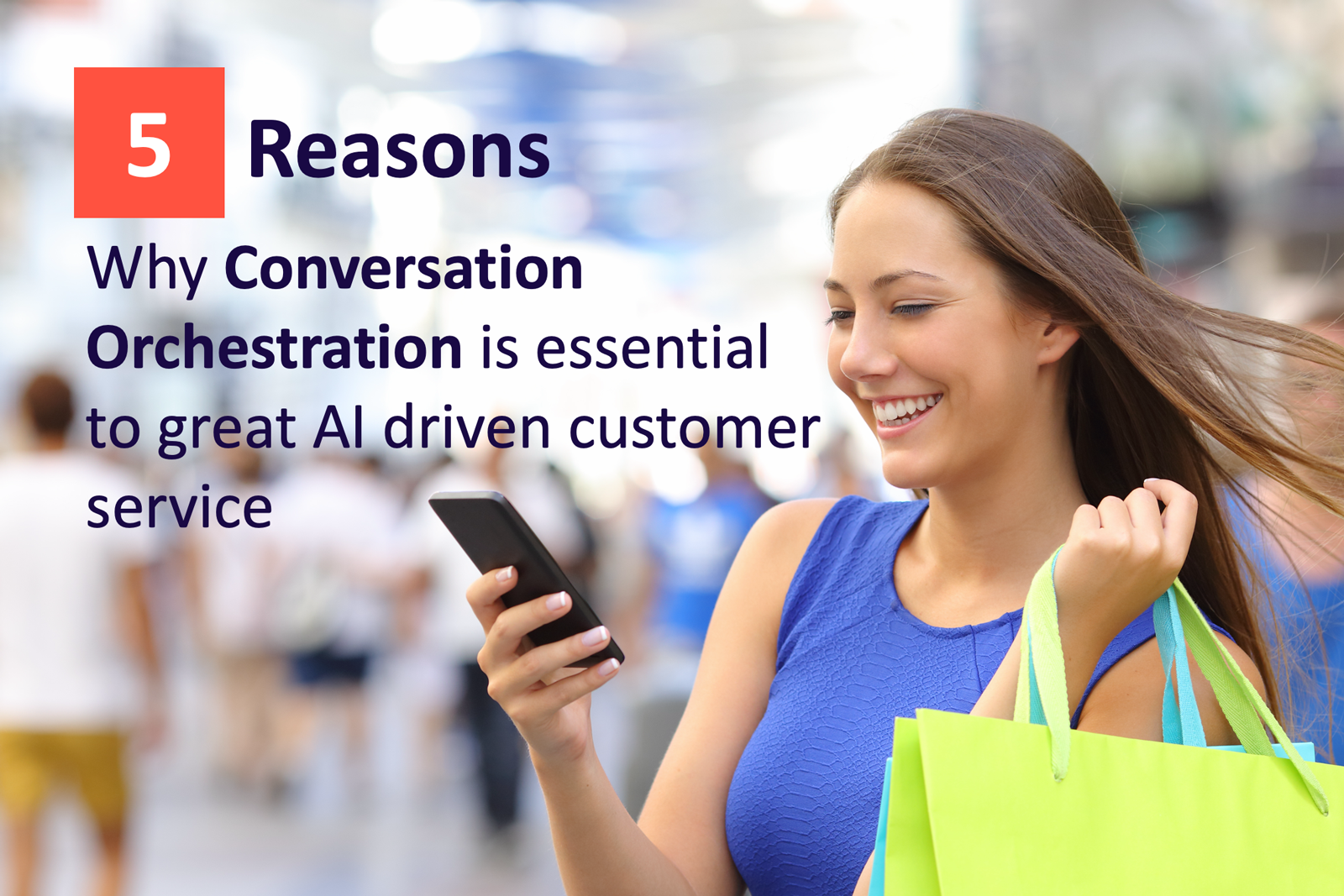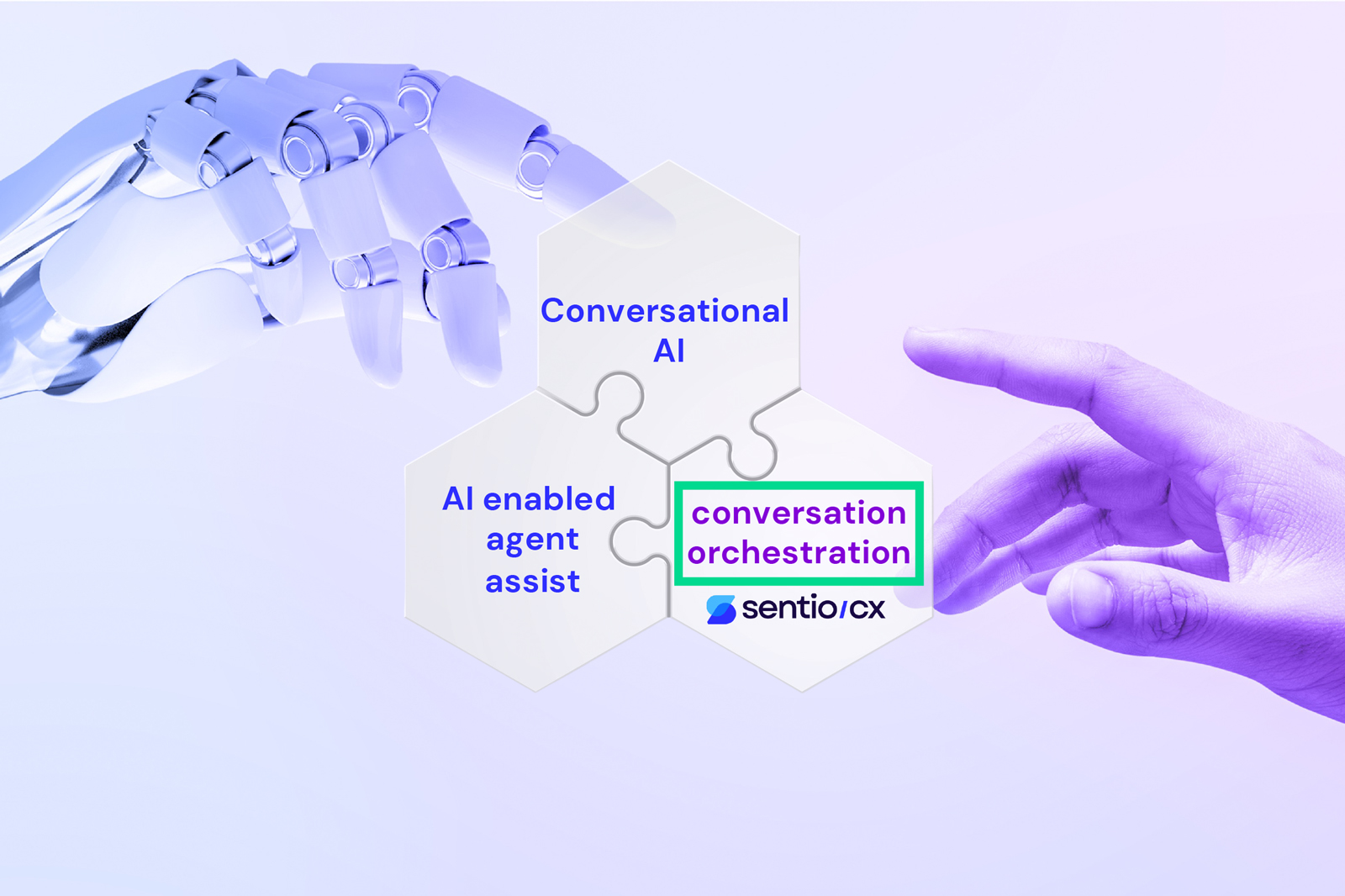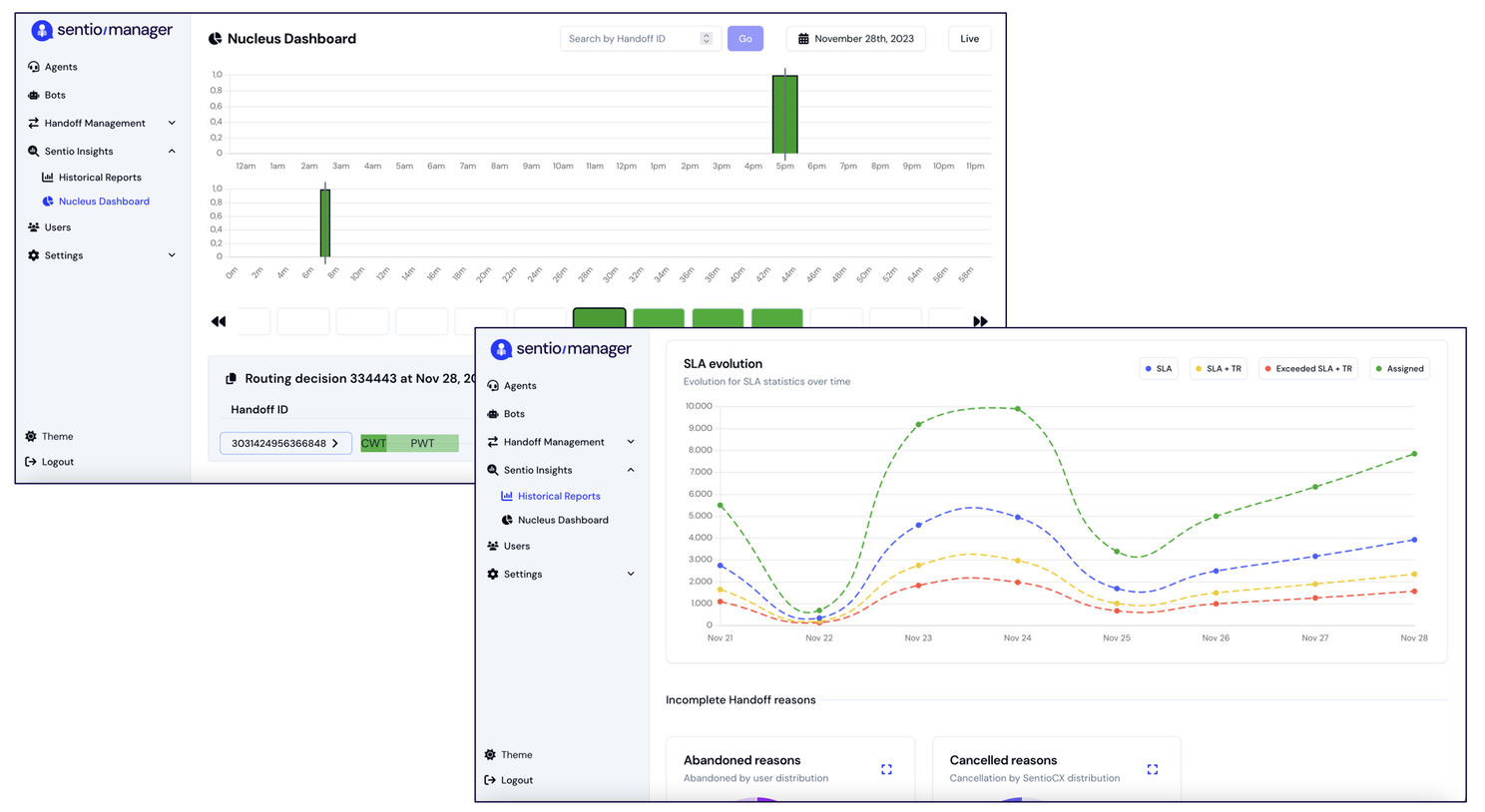Why Conversation Orchestration is essential to great AI driven customer service
by: Ronald Rubens & Brian Manusama

Since the beginning of this year, barely a day has passed without AI and ChatGPT grabbing headline news. These technologies are profoundly and permanently impacting our society. In this blog, we’re eager to share our insights on how the rapid adoption of AI and ChatGPT is changing the traditional Call Center and CCaaS (Contact Center as a Service) industry. We will elaborate on the 5 reasons why conversation orchestration is essential by facilitating an effective Human-In-The-Loop (HITL) as the last mile to make the customer experience seamless and frictionless.
1. AI and ChatGPT are powering the next big leap in customer self-service.
Conversational AI platforms are catalyzing a significant transformation in customer self-service. These technologies offer vast enhancements over the previous generation of chatbots, which previously frustrated customers with misunderstandings and irrelevant responses. The new generation of chatbots, powered by AI and ChatGPT, as a subset of Large Language Models (LLMs), excels in generating human-like responses that effectively address a broad spectrum of customer queries. These advanced chatbots can provide tailored responses to meet specific customer needs, leading to shorter wait times and enhanced overall satisfaction. They possess the capability to learn autonomously from past conversations, equipping them with extensive knowledge from data sources. As such, it is no longer a case of if CX organizations will be forced to further invest in conversational AI, but when. Ensuring that this new wave of technology is properly architected to deliver for customers is essential.
2. Digital self-solutions are not yet delivering their full promise.
Customer Service executives are confronting a perfect storm of challenges, including increased call volumes and a talent shortage. Add to this mix inflated customer expectations and high-effort service designs, and it becomes easy to understand why they are under significant pressure.
Digital and Customer Self-service solutions have emerged as an increasingly prevalent tool to address customer service challenges and to optimize operational efficiency. CX Leaders often perceive these technologies as a win-win, offering cost savings and delivering a great experience through quick resolutions. There is research to back this – with Salesforce’s 2023 state of Customer Service suggesting that 59% of customers even prefer self-service tools for simple questions/issues.
So, what’s the problem you may ask? With 88% of customer journeys starting in self-service touching multiple channels according to the latest survey of Gartner in December 2022, only a shocking 13% of customers are fully able to resolve their issues through self-service as the only channel.
Gartner
The same survey of 1,492 B2B and B2C customers found that a seamless transition between channels is a key driver of positive customer experience (CX) outcomes and future self-service adoption. When the transition is high effort, meaning that switching channels did not lead to resolution, the probability of positive CX and loyalty outcomes is dismal. Conversely, 74% of customers who experience easy transitions to a customer service representative say they’ll return to self-service next time. Ensuring an easy transition between channels, and particularly to a live agent, is critical to deliver on the value of self-service/AI for both customers and businesses.
“Despite resolving their issue in assisted service, these customers are just as likely to use self-service in the future as those whose issues were fully resolved using self-service. Eric Keller, Sr. Director Analyst, Gartner”
3. Effortless Transitions Improve Business KPI’s and Customer Experience.
The above survey highlights the benefits of promoting seamless transitions between self-service and assisted channels. Seamless transitions improve Customer Experience across a range of metrics and boost loyalty, but they also save time and resources. In fact, 93% of respondents reported high customer satisfaction (CSAT) when there was a seamless channel transition.
4. Human-In-The-Loop (HITL): Desired or Required When It Matters
When designing customer self-service, we should treat the Human-In-The-Loop (HITL) as the last-mile to make the customer service experience seamless and frictionless.
In short, there are several occasions where we need to bring in the knowledge, flexibility and skills that only a human agent or knowledge worker can deliver:
a) Complicated issues where self-service is not able to drive the issue to resolution.
When customers need to modify their contracts, they often require the expertise of a live agent knowledgeable in contract management and legal matters. Instances where a bot might ask too many clarifying questions, leading to customer annoyance, further highlight the need for human intervention. Additionally, complex issues, particularly in banking or other specialized areas, require support of knowledgeable professionals for the foreseeable future.
b) When detecting a buying or a defecting customer signal
Companies keen on not missing revenue opportunities must be adept at identifying the right moments for a live agent to step in—especially when a customer shows interest in making a purchase or exhibits signs of potential departure. In such instances, it’s crucial for the bot to recognize these signals promptly and insert the most relevant salesperson or expert with the highest priority through real-time triaging.
c) Human Empathy
Early detection of customer sentiment allows businesses to capture their customers’ feelings and respond appropriately via live agents. There’s a common belief that bots lack empathy and that demonstrating empathy effectively requires promptly connecting customers to a human agent. However, some staunch technologists argue that achieving empathetic responses through technology is only a matter of time. Our research indicates that customers tend to become more irritated with perceived ‘fake empathy’ from a bot than when interacting with a human being. Therefore, ensuring a seamless transition to a live agent when it truly matters is crucial.”
Take, for example, an insurance company in the Netherlands that has been utilizing conversational AI with success. Despite customer satisfaction with the bot, the company occasionally routes customers to live agents as a gesture of care. This inclusion of a human touchpoint, even briefly, reinforces customer care before handing back the conversation to the bot.
So, Bots aren’t good at delivering empathy to customers, but they’re increasingly good at understanding how the customer feels. You don’t want the AI to deliver the empathy, you want to leverage the AI to both prime the agent to know the ideal tone to set, and to pick the agent best able to deliver that as well.
In an era of advanced AI and ChatGPT, customers expect immediate and accurate responses. Yet, many existing technologies only provide basic First-In-First-Out or are leveraging multiple queues in traditional call centers as hand-offs from bots to human agents without any ability to manage traffic, prioritize crucial conversations, or seamlessly connect users with specialized knowledge workers. This erratic transfer process often results in the frustration of unpredictable waiting times and in some cases agents who are unable to resolve issues within the first contact. As a result, the existing disconnect between bots and human agents is becoming increasingly undesirable in today’s customer-centric landscape. Providing the opportunity for a simple escape from a bot to a live agent is essential. This fact has led to the necessity of what we now call conversation orchestration. In an ideal world, perfect harmony should exist among digital self-service channels and live agents or knowledge workers for an optimized customer experience.
5. Conversation Orchestration: the missing piece of the puzzle in AI enhance Customer Experience?
In addition to its application in conversational AI, Generative AI also plays a significant role in AI Agent Assist, a technology that supports human agents during customer interactions. By providing real-time suggestions and relevant information, ChatGPT can help agents respond more effectively and efficiently to customer inquiries. However, what Conversational AI and AI enabled Agent Assist are not resolving is the absence of harmony between automated responses and live agent interaction.
Here at SentioCX, we envision a future where transitioning conversations from digital self-service solutions to live agents is effortless and seamless. The future of customer service will involve chatbots and live agents working together in harmony to provide the best outcome to customers and agents. Conversational Orchestration leverages AI to facilitate agent-pairing and to orchestrate conversations. This enables organizations to take advantage of conversational AI and operational efficiency while also optimizing customer intimacy. In Ronald’s previous blog “Resolving the Customer Experience paradox”, the point was made that current routing algorithms in CCaaS solutions are outdated. They cannot make routing decisions based on recognition of real time intents or sentiment from the bot. Hence, we came up with a new way of revolutionizing Human-In-The-Loop. We use AI based agent pairing to create seamless and effortless transitions from digital self-service to live agents and knowledge workers.
The essential components of AI enhanced Customer Experience
By using the three pillars of AI enhanced Customer Experience combined with AI and ChatGPT, we provide an evolution on the now obsolete traditional IVR. Users can effortlessly ask questions and receive automated responses or when necessary be connected directly to the right agent or knowledge worker to solve their issue.

In summary
Conversation Orchestration effectively prioritizes high-value interactions, through predictive actions based on agent availability, skills, and proficiency. Furthermore, it dynamically escalates priority with changing conditions or sentiment and temporarily provides self-service or follow-up for lower value/priority interactions when service levels are exceeded. This approach is designed to optimize the impact on key performance indicators (KPIs) such as customer churn, customer satisfaction, and (up and cross) sales. SentioCX delivers these capabilities out of the box along with dashboards to manage, track and visualize the impact on the most relevant KPIs.

Sentio Insights provides dashboards and reports to manage, track and visualize KPIs and Service Levels